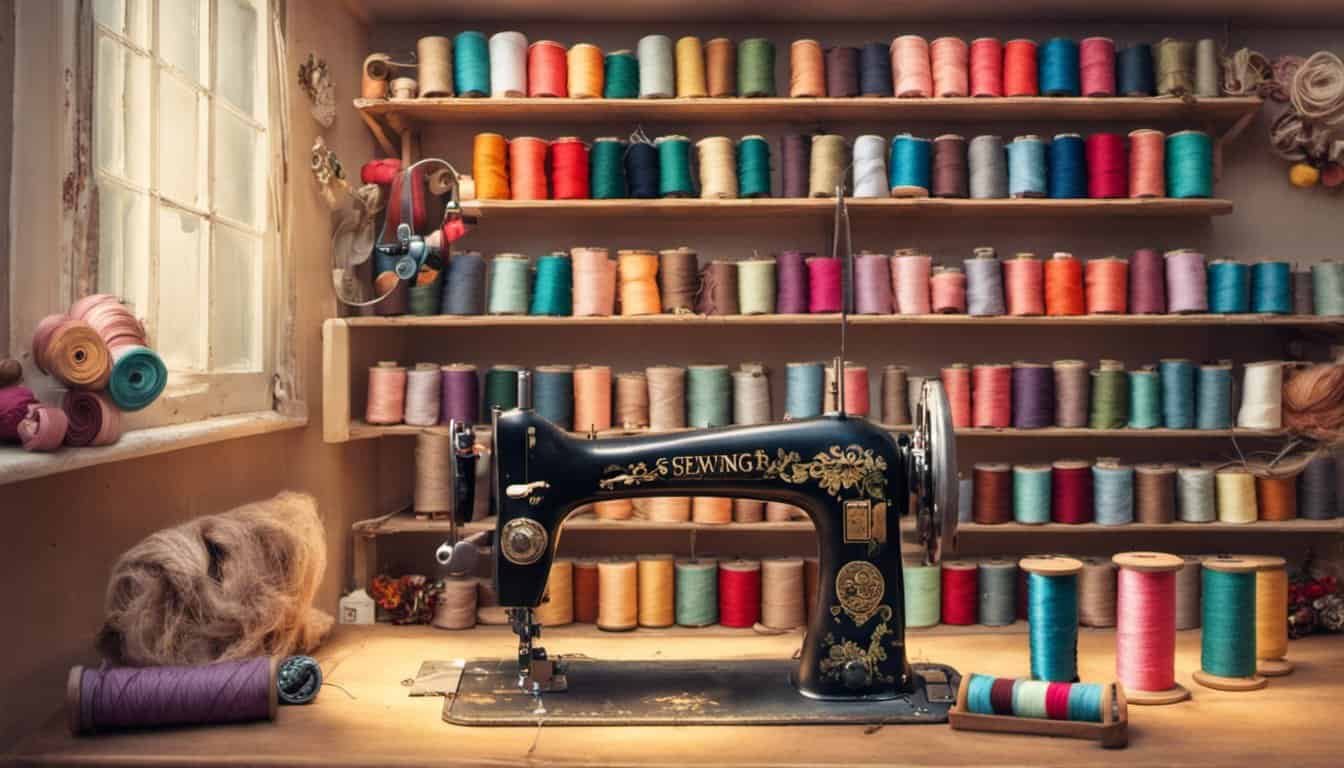Have you ever admired the seamless details in a beautifully tailored garment and wondered how they’re achieved? I’ve felt that curiosity too, especially when I wanted my projects to look professional without spending hours on intricate techniques. That’s when I discovered the magic of the pick stitch.
A pick stitch, sometimes called a slip stitch, is a simple yet powerful method to create neat, barely visible lines on your fabric. Whether you’re hemming a favorite pair of jeans, attaching a lining, or adding subtle decorative touches, mastering this stitch can make all the difference. It’s perfect for those moments when you want your sewing work to look polished without drawing attention to the seams.
What Is a Pick Stitch
A pick stitch is a fine, even line of stitching that creates a nearly invisible seam on the fabric’s surface. I use it to add subtle details to my sewing projects, ensuring a professional finish without bulky seams. This technique involves sewing small, closely spaced stitches by hand, typically every few millimeters. Pick stitching works well on various fabrics, including denim, silk, and canvas, enhancing hems, attaching linings, and embellishing edges. By incorporating a pick stitch, my garments gain a polished appearance while maintaining their lightweight feel.
- Precision: I achieve uniform stitch spacing for a clean look.
- Versatility: I apply pick stitches to hems, facings, and decorative edges.
- Discreetness: The stitches remain hidden, keeping seams unobtrusive.
- Durability: Tight stitching ensures seams hold up over time.
Using a pick stitch requires patience and attention to detail. I start by marking the stitch points with tailor’s chalk, then carefully sew each stitch by hand. This method allows me to control the stitch length and placement, resulting in seamless, elegant finishes on my sewing projects.
Why Use a Pick Stitch
- Precision: It enables fine, evenly spaced stitches that ensure a professional finish.
- Durability: It strengthens seams for long-lasting garments.
- Versatility: It’s applicable across various fabrics like denim, silk, and canvas, and for different purposes such as hemming, attaching linings, and adding decorative edges.
- Discreetness: It keeps seams nearly invisible, maintaining the garment’s polished appearance.
Tools Needed
- Needle: Opt for a fine, sharp hand-sewing needle suitable for your fabric type.
- Thread: Choose a matching, high-quality thread that blends seamlessly with your material.
- Thimble: Protect your finger while pushing the needle through dense fabrics.
- Pins or Clips: Secure fabric pieces to maintain alignment during stitching.
- Fabric Marker: Accurately mark stitch points without leaving permanent marks.
- Magnifying Glass or Adequate Lighting: Ensure clear visibility for precise stitch placement.
How to Sew a Pick Stitch
Sewing a pick stitch adds a refined touch to your projects. Here’s how I do it step-by-step and some best practices to ensure flawless results.
Step-by-Step Instructions
- Prepare Your Fabric
Align the fabric edges accurately. Use pins or clips to hold them in place, ensuring no shifting occurs during stitching.
- Mark Stitch Points
Use a fabric marker to create evenly spaced dots. Typically, spacing 1/8 inch apart works well for most projects.
- Thread Your Needle
Select a fine, sharp needle and thread it with matching high-quality thread. Knot the end securely to prevent slipping.
- Start Stitching
Insert the needle from the underside of the fabric to hide the knot. Bring it up at the first marked point, then down at the next, forming a small, discreet stitch.
- Maintain Consistent Tension
Keep the thread tension even to ensure uniform stitch size. Avoid pulling too tight, which can pucker the fabric.
- Continue the Pattern
Follow the marked points, stitching in a straight line or along the desired path. Move slowly to maintain precision.
- Finish the Stitch
Once you reach the end, secure the thread with a small knot on the underside. Trim any excess thread close to the knot.
Best Practices
- Choose the Right Tools
Opt for a fine needle and matching thread to keep stitches subtle. A magnifying glass can aid in precise stitching, especially on delicate fabrics.
- Practice Consistency
Evenly spaced stitches enhance the professional look. Practice on scrap fabric to develop a steady hand.

- Use Adequate Lighting
Good lighting ensures each stitch is clear and even. Position your workspace to minimize shadows.
- Maintain Fabric Alignment
Keep fabric layers flat and aligned to prevent uneven stitches. Reuse pins or clips as needed to maintain placement.
- Work Slowly and Deliberately
Rushing can lead to inconsistent stitches. Take your time to ensure each stitch is accurate and neat.
- Secure Your Ending
Always tie a knot at the end of your stitching to prevent unraveling. Hide the knot beneath the fabric for an invisible finish.
- Choose Appropriate Fabric
Pick stitches work best on stable fabrics like denim, silk, and canvas. Test on a small area if unsure about fabric compatibility.
« How to Cut Fabric Straight: 7 Beginner Tips That Will Change Your Sewing Game
Unlock the Secret: How to Hem Pants by Hand with This Simple Guide »
By following these steps and best practices, you can achieve a polished and professional finish with your pick stitching projects.
Tips for Mastering Pick Stitching
Achieving flawless pick stitching requires practice and attention to detail. Here are some essential tips to enhance your technique:
- Choose the Right Tools
Select a fine needle and high-quality thread that complements your fabric. Using the appropriate tools ensures neat, even stitches.
- Mark Stitch Points Precisely
Use a fabric marker to create clear, consistent marks. Accurate markings guide your stitching and maintain uniform spacing.
- Maintain Consistent Tension
Keep the thread tension steady to prevent loose or tight stitches. Consistent tension results in a smooth, professional finish.

- Work in a Well-Lit Area
Good lighting helps you see stitch points clearly. Proper illumination reduces mistakes and improves stitch accuracy.
- Align Fabric Properly
Ensure your fabric layers stay aligned throughout the stitching process. Proper alignment avoids puckering and uneven seams.
- Practice Slow and Steady Movements
Take your time with each stitch. Slow, deliberate movements enhance precision and stitch consistency.
- Select Appropriate Fabrics
Choose fabrics that suit pick stitching, such as denim, silk, or canvas. Compatible materials hold stitches well and showcase the technique effectively.
- Use a Thimble for Protection
A thimble shields your fingers from needle pricks and provides better control. It allows you to sew more comfortably and efficiently.

- Secure Your Thread Ends
Knot your thread securely at the beginning and end of your stitching. Properly secured threads prevent unraveling and ensure durability.
- Practice Regularly
Consistent practice hones your skills. Regular stitching sessions build muscle memory and improve overall technique.
Implementing these tips will help you master pick stitching, resulting in elegant and durable finishes for your sewing projects.
Conclusion
Mastering the pick stitch has truly transformed my sewing projects giving them that professional touch I always desired. It’s amazing how such a simple technique can make such a big difference in the final look of a garment or any fabric item.
I encourage you to give it a try take your time practice consistently and watch your skills grow. With patience and dedication you’ll be adding those subtle yet stunning details that set your creations apart.


















